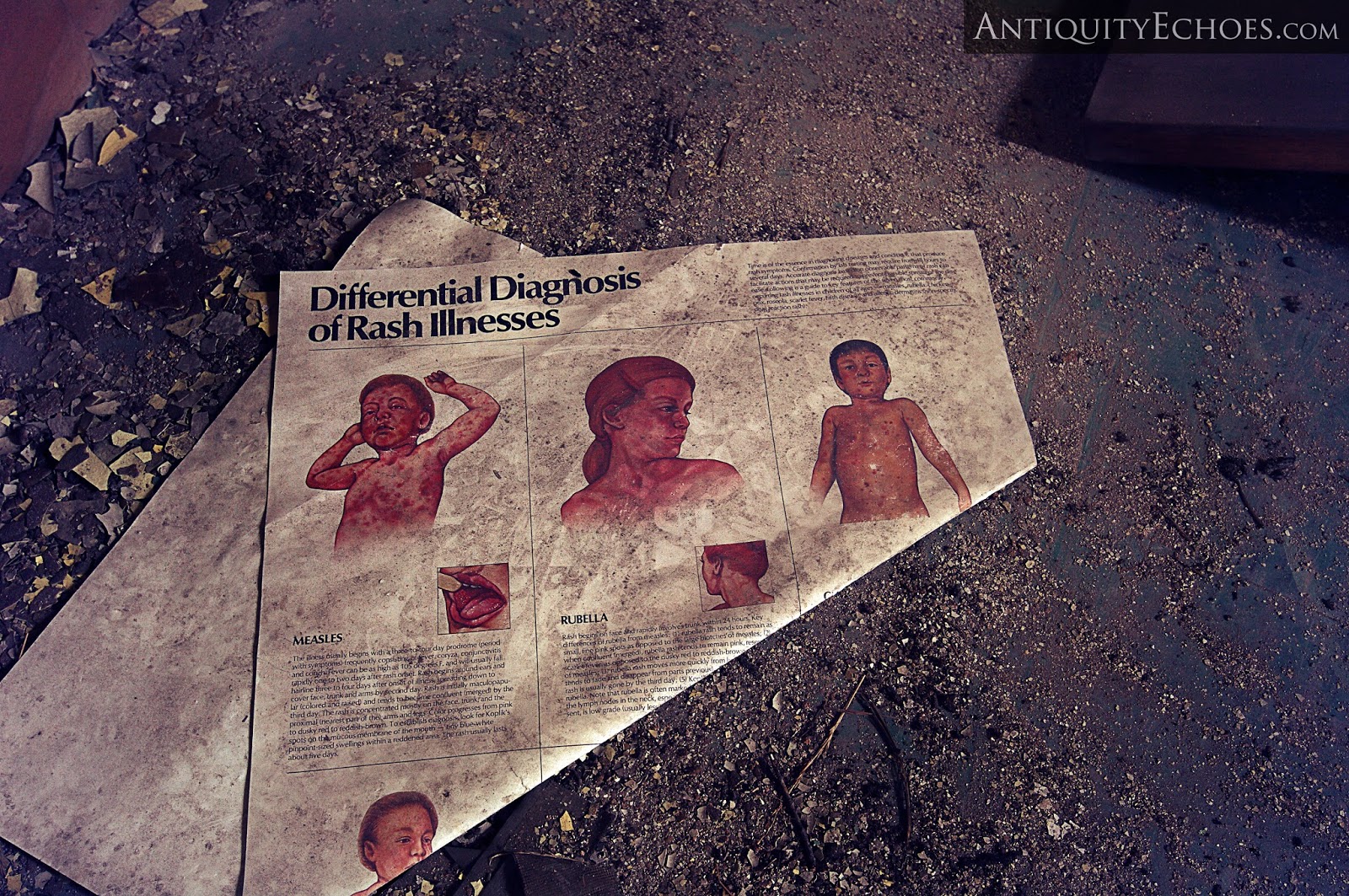The Psychopathic Building
In the heart an active hospital center
in Maryland, surrounded by neatly mowed lawns and busy roadways, sits
the neglected remains of one of its founders and originators. A
boldly cut cornerstone on the face of the weathered building
proclaims proclaims it's purpose in no uncertain terms - “Psychopathic Building”. Below that, in
the same pronounced print, one finds its birth date: 1914. Like many buildings hailing from this
era of American architecture, the 'Psychopathic Building' radiates
character. You simply do not see these kinds of buildings anymore.
Obviously, the primary reason for this is due to expense, but we also
wonder if perhaps no artisans remain in the modern day who could
craft such an edifice. High walls of stone frame a pillared entrance
akin to the kind one may see at a grand estate. Outstretched to the
left and right lie the wards. All of it is beautiful, and also sadly
forgotten, even in the midst of a busy campus.
 It was 10am and the day had already
reached 103 degrees. This was not something we were particularly
thrilled about, and as we walked across the sticky sun-softened
pavement toward the building we braced ourselves for what was surely
to be an exceptionally warm welcome inside. We were correct. The
stone walls, sealed windows, and dark roof of the asylum combined to
create what was, in essence, a giant sun-oven. An near-solid wall of
unmoving humid air hit us within moments of entering the massive
building. After taking a moment to adjust the best we could, we
unpacked our equipment and began our work. Almost immediately a
kitten appeared, perched and staring from right outside a
ground-floor window. As we approached in an attempt to film it, the
kitten leapt from its perch and darted out of sight.
It was 10am and the day had already
reached 103 degrees. This was not something we were particularly
thrilled about, and as we walked across the sticky sun-softened
pavement toward the building we braced ourselves for what was surely
to be an exceptionally warm welcome inside. We were correct. The
stone walls, sealed windows, and dark roof of the asylum combined to
create what was, in essence, a giant sun-oven. An near-solid wall of
unmoving humid air hit us within moments of entering the massive
building. After taking a moment to adjust the best we could, we
unpacked our equipment and began our work. Almost immediately a
kitten appeared, perched and staring from right outside a
ground-floor window. As we approached in an attempt to film it, the
kitten leapt from its perch and darted out of sight.
We were with company on this day, by
way of a local resident and fellow photographer. He informed us that
there are many feral cats who now call this old asylum home. As our
day wore on we observed more and more signs of a decent-sized cat
population. We continuously noted twisting paw-print trails leading
down the center almost every hallway and corridor in the facility,
clear of dust and debit from heavy use by the cat populace. Another
clear sign of the cat population was an upper-floor bathtub which had
been turned into a giant litter-box of sorts (It was every bit as
majestic as you can imagine). Though we never saw another cat during
our three hours inside, we couldn't shake the feeling that they were
watching us from some dark corner or long shadow. Just out of
eyesight.
Cats aside, the facility was filled
with an array of interesting relics left over from the facility's
days of being a mental hospital. Wheelchairs abound, many left
forgotten in strange and hauntingly picturesque locations. This
actually brings us to a good topic regarding the photography of
abandoned locations: What is it about lonely chairs that people find
so captivating? They are an incredibly popular subject matter, and
one we too have found impossible not to film. Is it that they now sit
alone and silent in these places which had been full of life? In a
strange way, the chairs in this old asylum did seem to be
contemplating all the things which they bore witness to throughout
their lives... Though perhaps the notion of sentient furniture was
just an effect of the severe heat on our minds.
Unlike some old hospital campuses,
which can quickly become popular hangouts for kids, or photography
fodder for people such as ourselves, this building had an almost
complete lack of human presence. Scarcely a footprint was seen on the
dust covered floors, nearly every single window was intact, and most
amazingly of all - There was a complete lack of spray paint. Cats
aside, the only visitor who frequented these halls was time.

The temperature increased with each floor of the building.
This book was rock hard. It almost seemed fossilized.
The sun parlor, as it were around 1920.
Not a terrible lot of sun in the sun parlor nowadays.
The hospital prior to the construction of the West wing.

















































